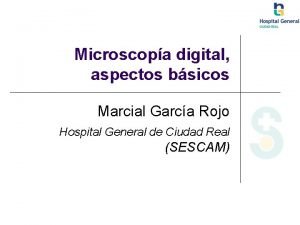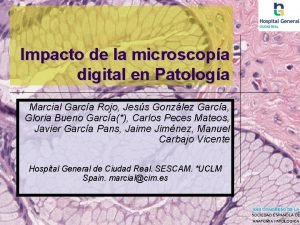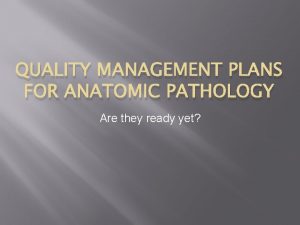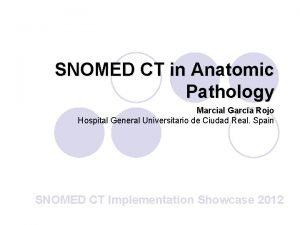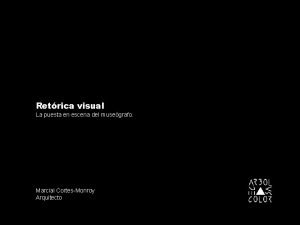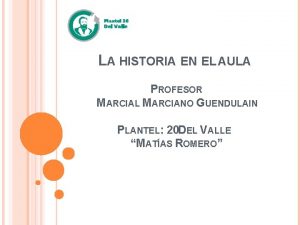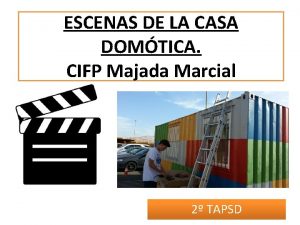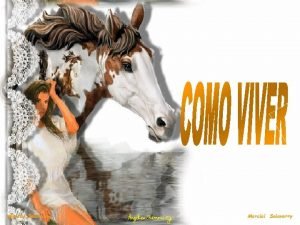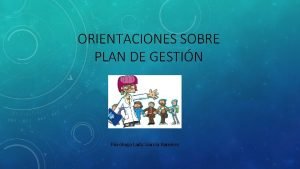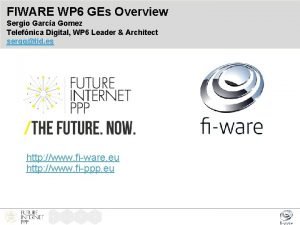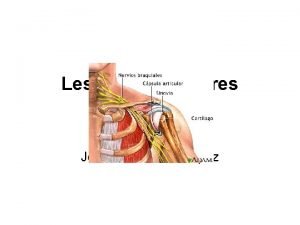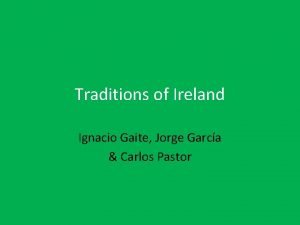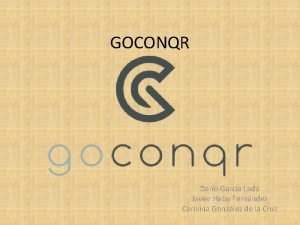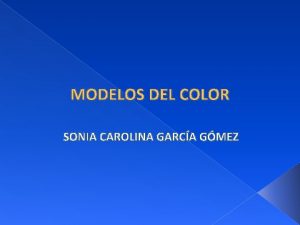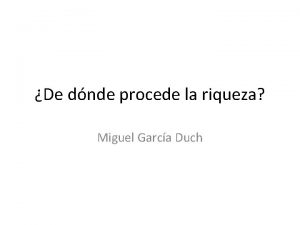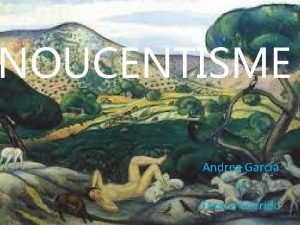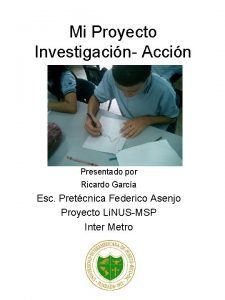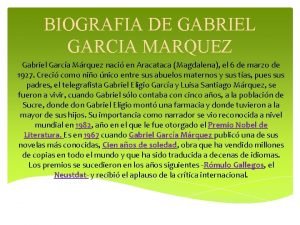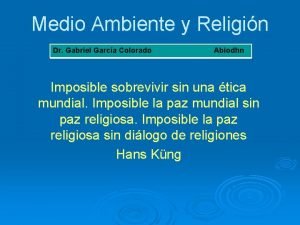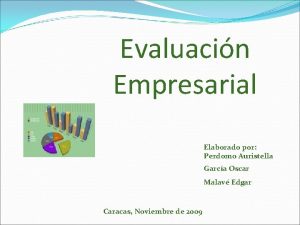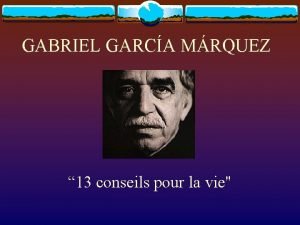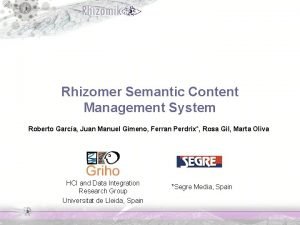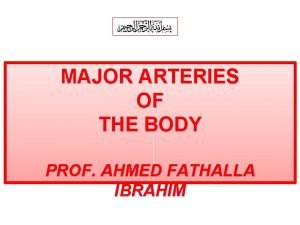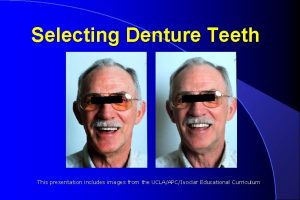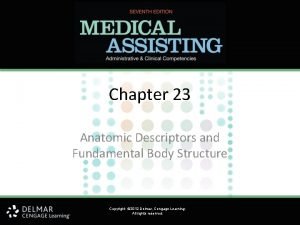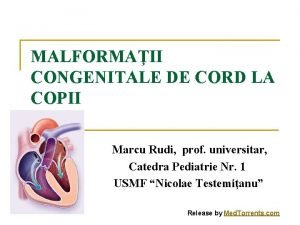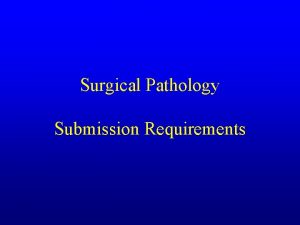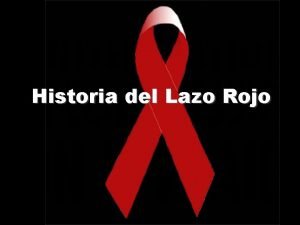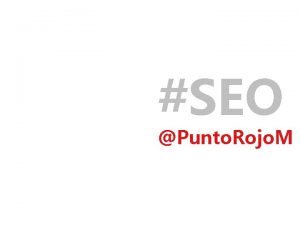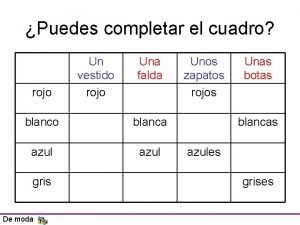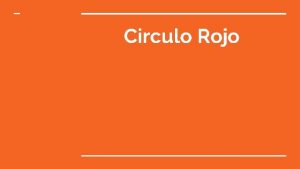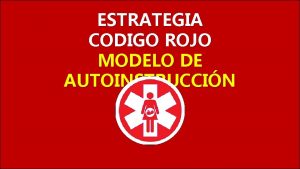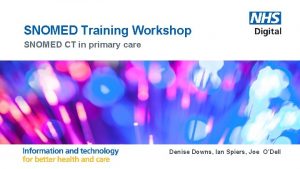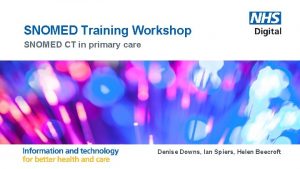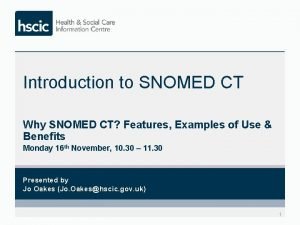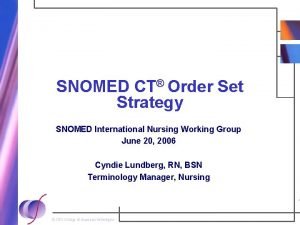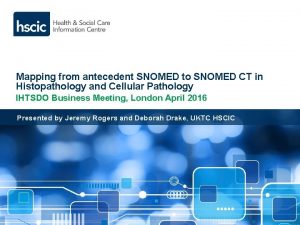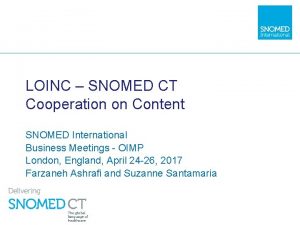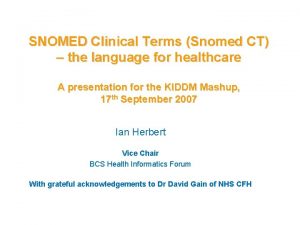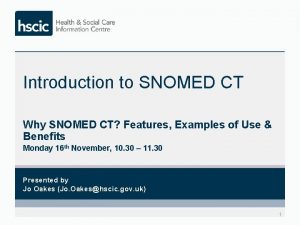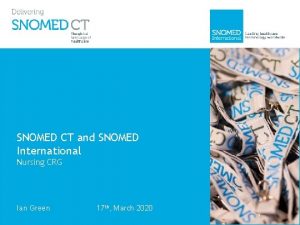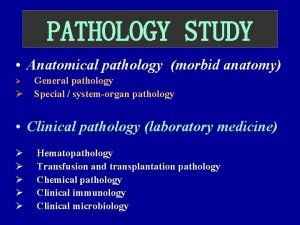SNOMED CT in Anatomic Pathology Marcial Garca Rojo











![Guidelines for encoding specimens with SNOMED CT l specimen from __[topography]__ obtained by __[procedure]__ Guidelines for encoding specimens with SNOMED CT l specimen from __[topography]__ obtained by __[procedure]__](https://slidetodoc.com/presentation_image_h/d21e3c41d2e302b2fb5c10e5af1f5a30/image-12.jpg)























- Slides: 35

SNOMED CT in Anatomic Pathology Marcial García Rojo Hospital General Universitario de Ciudad Real. Spain SNOMED CT Implementation Showcase 2012

Agenda l Background l Encoding specimens and procedures l Encoding pathology diagnosis l Postcoordination in diagnosis l Morphological vs clinical codes

Background SNOMED CT useful in: l Reference terminology: Information Systems (IS) integration (semantic interoperability) ¡ EHR – Pathology IS l Electronic request Pathology Study (specimens, anatomy) l Pathology report available in EHR (diagnosis, clinical problems, episode coding-billing) ¡ Pathology IS and telepathology portal (specimens and diagnosis) ¡ Pathology IS and DICOM image manager (specimens and diagnosis) ¡ Pathology IS and hospital tumor registry, biobank IS, … l Interphase terminology ¡ Searches made easier, Concept navigation, Qualifiers can be added, synonyms are available

SNOMED CT and digital images: DICOM l Specimen Obtained (types, anatomic location, collection procedure) l Specimen processing (sampling procedure, preparation procedure, stains, fixatives, embedding) l Diagnosis…

Pathology reports l Free text reports ¡Coding specimens (procedures? ), anatomy and diagnosis l Structured reports ¡Coding both the question and the answer l. Question: Observable entity (Histological grade? ) l. Answer: Diagnosis and qualifiers

Structured pathology reports l The general approach to coding items on the CAP and IHE checklist that ask questions has been to use concepts from the SNOMED CT Observable Entity hierarchy. l The answers to these questions can be chosen from concepts in any of several hierarchies. Primarily, they are found in the Finding, Disorder, or Morphologic Abnormality hierarchies (van Berkum, 2003).

procedure specimen clinical finding specimen

Encoding specimens l Spanish Society of Anatomic Pathology (SEAP): www. seap. es l Consensus from 8 institutions from all over Spain. l Criteria for classifying specimens (without consideration of workload or diagnosis) 1. 2. General topography (skin) Obtaining procedure or intention: In biopsies l l l l Superficial biopsy (punch, tru-cut or needle) Incisional biopsy Enucleation Complete excision (generally with adjacent tissue) Partial resection of an organ Complete removal of an organ Removal of organ and adjacent structures (e. g. lymphadenectomy) Special resection (Whipple, abdominoperineal, …) o method (stereotactic, endoscopy)

Encoding specimens l Cytology ¡Exfoliative cytology, brushings or scrapings ¡Fluid sample ¡Touch preparation ¡Fine Needle Aspiration (FNA) l Autopsy ¡Coded as procedures

Results of encoding specimens and procedures with SNOMED CT l Biopsies: 345 specimens and procedures ¡ 112 specimens (32%) post-coordinated ¡ 47 procedures (14%) post-coordinated l Cytologies: 206 specimens and procedures ¡ 73 specimens (35%) post-coordinated ¡ 92 procedures (46%) post-coordinated l Autopsies: 21 different procedures (3 postcoordinated)

Guidelines for encoding with SNOMED CT. Biopsies l What to do when 2 similar codes are found (choose the most specific one). ¡ 128157004 |tissue specimen from brain (specimen)| better than 119398007 |specimen from brain (specimen)| ¡ 438351003 | tissue specimen obtained by esophagogastrectomy (specimen) | includes: 122631007 | specimen from esophagus obtained by esophagogastrectomy (specimen) | ? ? ? l “esophageal …. [biopsy sample” or “tissue specimen] from esophagus”? “tissue specimen” was preferred
![Guidelines for encoding specimens with SNOMED CT l specimen from topography obtained by procedure Guidelines for encoding specimens with SNOMED CT l specimen from __[topography]__ obtained by __[procedure]__](https://slidetodoc.com/presentation_image_h/d21e3c41d2e302b2fb5c10e5af1f5a30/image-12.jpg)
Guidelines for encoding specimens with SNOMED CT l specimen from __[topography]__ obtained by __[procedure]__ Where procedure <> “biopsy”. Procedure can be general (“excision”) or very specific (“Whipple resection | subtotal adrenalectomy”). (229 concepts) l specimen from __[topography]__ obtained by __[ |core |excisional |image guided core |incisional |open |…]__ biopsy Very specific procedures, from “incisional biopsy” to “stereotactically guided core needle biopsy” or “CT guided needle biopsy”. (55 concepts). l specimen from __[topography]__ obtained by biopsy (specimen) Biopsy type is not stated. (46 concepts) l [topography]__ biopsy sample (75 concepts). l tissue specimen from__[topography]__ (62 concepts)

Postcoodination rules Refinement (C: A=V) (C: A 1=V 1, A 2=(V 2), …, An=Vn) l Specimens: a. b. c. specimen : specimen procedure (attribute) = procedure specimen : specimen source topography (attribute) = body structure , specimen procedure (attribute) = procedure l Procedures: ¡ procedure : procedure site - Direct (attribute) = body structure

specimen : specimen procedure (attribute) = procedure l 128171007 | tissue specimen from stomach (specimen) | : 118171006 | specimen procedure (attribute) | = 10077008 | endoscopic biopsy of stomach (procedure) | (Simplified notation)

specimen : specimen procedure (attribute) = procedure How to distinguish partial from total esophagectomy specimen: l 122630008 | specimen from esophagus obtained by esophageal resection | : 118171006 | specimen procedure | = 3980006 | subtotal resection of esophagus (procedure) |

Very specific anatomic regions l Very few precoordinated terms are very specific (post-coordinated needed) ¡ 122683000 | specimen from left kidney, inferior pole obtained by partial nephrectomy (specimen) | l A specific topographic code may be found as precoordinated: ¡ 12212007 | structure of superior segment of left lower lobe of lung (body structure) |

Laterality 118169006 | specimen source topography (attribute) | 272741003 | laterality (attribute) | Values admitted by this attribute are descendants from the concept: 182353008 | side (qualifier value) |: ¡ 7771000 | left | l 51440002 | right and left | l 419161000 | unilateral left | ¡ 24028007 | right | l 51440002 | right and left | l 419465000 | unilateral right |

Implementation of specific sites and laterality l It may be easier implementing a database field “topography” coded with SNOMED CT than post-coordinating specimens or procedures with this attribute.

A possible error in SNOMED CT l “ 122622007 | specimen from pleura obtained by lymph node biopsy |” l (included as a descendant of “pleura biopsy sample”)

Encoding Pathology diagnosis l Pathologists should become aware of the structure and contents of SNOMED CT l A shift from T, P, M schema to a polihierarchy and relationship schema l Pathologist’ diagnosis should be encoded as morphology (abnormal body structure) or as clinical diagnosis?

CAP Anatomic Pathology Subset Hierarchy Approximate Count Body structure 3, 805 Clinical Finding 2, 024 Procedure 780 Observable entity 386 Specimen 264 Pharmaceutical / Biologic product 83 Record artifact 67 Organism 61 Staging and scales 33 Substance 24 Qualifier value 21 Special concept 12 Events 9 Situation with explicit context 9 Physical object 4 TOTAL CONCEPTS (Jan 2010) 7, 582 In daily practice, this subset was not considered useful by pathologists, mainly due to the mixture of different hierarchies (clinical findings, body structure, observations, . . ), and due to the fact that many basic pathology diagnosis were not included in the CAP AP Subset.

Implementation of SNOMED CT in Hospital General de Ciudad Real l IHE: Structured Reports Value Sets (1, 840 possible values for observations) l HGUCR: 2, 320 pathology diagnosis codes mapped to SNOMED CT l Search for descriptions that match the local legacy codes was performed using Clini. Clue Xplorer version 2010 1. 243, using SNOMED CT 2011 -01 -31 International Release and 2010 -0430 Spanish Edition.

Results. Implementation of SNOMED CT. Hierarchies of precoordinated terms l Postcoordination needed in 19% (3 concept. ID needed only rarely) (81% precoordinated) l Morphology – Abnormal body structure ¡Only 44% of the codes! (1076) l Clinical findings ¡ 48% of the codes l Qualifiers, normal anatomic structures, procedures, physical object, substance, organism ¡ 10% of the codes

Results l 48% of the total terms could be coded using the disorder hierarchy, using: ¡In 1104 terms, using “disorder” hierarchy, e. g. Rosacea ¡In 71 terms, using “finding” hierarchy, e. g. World Health Organization (WHO) grade I (central nervous system tumor)

Results l There were a 6% of the local morphological diagnosis that were not well represented using either morphological abnormality or disorder/finding hierarchies, and the following SNOMED CT were found useful (generally combined with other hierarchies): ¡ In 95 local terms, the use of a SNOMED CT qualifiers (generally combined with clinical or morphological codes) was found useful, e. g. Granulomatous ¡ In 68 local terms, the use of SNOMED CT body structures was found useful, e. g. Undescended testis ¡…

Postcoordination l Morphological concepts (morphologically abnormal structure) are primitive terms (not “sufficiently” defined) and CANNOT be postcoordinated l CILLIATED CELL ADENOCARCINOMA l 35917007 + 125550007 ¡ 35917007 | Adenocarcinoma, no subtype (morphologic abnormality) ¡ 125550007 | Tubal metaplasia (morphologic abnormality)

Attributes Body Structure Laterality Clinical Finding Associated With • After • Causative Agent • Due To Associated Morphology Clinical Course Episodicity Finding Informer Finding Method Finding Site Has Definitional Manifestation Has Interpretation Interprets Occurrence Pathological Process Severity Events Associated With • After • Causative Agent • Due To Occurrence Evaluation Procedure Component Has Specimen Measurement Method Property Scale Type Time Aspect Pharmaceutical/Biologi c Product Has Active Ingredient Has Dose Form Physical Object Has Active Ingredient Procedure Access Direct Substance Has Focus Has Intent Method Priority Procedure Device • Direct Device • Indirect Device • Using Access Device • Using Device Procedure Morphology • Direct Morphology • Indirect Morphology Procedure Site • Procedure Site – Direct • Procedure Site – Indirect Recipient Category Revision Status Route of Administration Surgical Approach Using Energy Using Substance Situation with Explicit Context Associated Finding Associated Procedure Finding Context Procedure Context Subject Relationship Context Temporal Context Specimen Procedure Specimen Source Identity Specimen Source Morphology Specimen Source Topography Specimen Substance

Linkage concepts in Pathology l The concept “histological grade (attribute)” is a linkage concept. l There are some special concepts, like attributes (e. g. 246229000 | histological grade (attribute)), that can be used as “linkage concepts”: l Question: 371469007 | histologic grade (observable entity), 246229000 | histological grade (attribute) l Answer (values): 370114008 | histological grades (qualifier value): 384812005 | moderately differentiated 263843001 | poorly differentiated 263918006 | undifferentiated 263933003 | well differentiated

Linkage concepts l Associated morphology is one of the linkage concepts (attributes) used to define clinical findings concepts. Associated morphology attributes specify the morphologic changes seen at the tissue or cellular level that are characteristic features of a disease.

Morphology attributes l SNOMED CT concept model provides constraints for attributes that are used as defining relationships, both in distributed SNOMED CT content (so-called precoordinated definitions) and in post-coordinated expressions. This model describes that the domain of the attribute Associated Morphology is the Clinical Finding hierarchy. l Procedure hierarchy concepts can have a Procedure Morphology attribute. l Specimen concepts can have a Specimen Source Morphology attribute. l All other hierarchies (body structure, events, physical objects, . . ) cannot have morphology related attributes.

Morphology attributes l Permissible values for Associated Morphology, Procedure Morphology, and Specimen Source Morphology attributes are codes belonging to the Morphologically abnormal structure (SCTID 49755003) and its descendants in the Body structure hierarchy.

Lack of coherence in SNOMED CT? l The concept “well differentiated adenocarcinoma” is not available as precoordinated term in SNOMED CT in either body structure or in clinical finding hierarchies. However, there available some more specific similar codes like “follicular adenocarcinoma, well differentiated (morphologic abnormality)” or “well differentiated adenocarcinoma, gastric foveolar type (morphologic abnormality)”.

Why we like morphological codes l As pathologists, we feel the need to have our pathology reports encoded using not only observables (questions) and qualifiers (value sets), but mainly using morphological codes that summarize all observations described in the report. l Therefore, the section of the pathology dedicated to coding should contain a list of morphological codes associated with the corresponding specimen.

Clinical findings preferred by EHR l In electronic health record studies, the clinical findings should generally be preferred over the morphologic abnormality concept. In case there is only a morphologic abnormality concept, it should be post-coordinated with a focus concept of "64572001|Disease (disorder)|" and linked with the concept model attribute "116676008|Associated morphology (attribute)|" (Lee, 2010).

Open questions l Should pathology diagnosis be coded using the morphological abnormality sub-hierarchy (part of the Body Structure hierarchy) or should they be coded using Clinical Finding hierarchy? l Should we try to use mainly morphological codes, and when they are not available, could some diagnoses in pathology reports be coded using clinical (disorder or finding hierarchies)? l Does using a mixture of hierarchies (Body Structure and Clinical Finding) in pathology diagnosis coding make sense when implementing data exploitation of information systems? l Should we ask IHTSDO to complete the list of morphological codes to add all those codes missing in the morphological abnormality sub-hierarchy?
 Marcial garcia rojo
Marcial garcia rojo Marcial garcia rojo
Marcial garcia rojo Quality management in anatomic pathology
Quality management in anatomic pathology Snomed codes pathology
Snomed codes pathology Marcial cortes monroy
Marcial cortes monroy Marcial marciano
Marcial marciano Dom?tica en casa
Dom?tica en casa Encontro almas predestinadas
Encontro almas predestinadas Marcial salaverry
Marcial salaverry Definicion de garca
Definicion de garca Ricardo garca
Ricardo garca Sergio garca
Sergio garca Definicion de garca
Definicion de garca Jorge garca
Jorge garca Garca la carolina
Garca la carolina Modelo cielab
Modelo cielab Miguel garca
Miguel garca Andrea garca
Andrea garca Eligas garça
Eligas garça Ricardo garca
Ricardo garca 13 linhas para viver
13 linhas para viver Gabriel garca
Gabriel garca Bibliografia de gabriel garcia marquez
Bibliografia de gabriel garcia marquez Ricardo garca
Ricardo garca Andrea garca
Andrea garca Garça tipos
Garça tipos Colorado garca
Colorado garca Repuestos garca
Repuestos garca 13 conseil de la vie
13 conseil de la vie Roberto garca
Roberto garca A mayor conocimiento mayor sufrimiento
A mayor conocimiento mayor sufrimiento Thoracic aorta branches
Thoracic aorta branches Squint test in dentistry
Squint test in dentistry Anatomic descriptors and fundamental body structure
Anatomic descriptors and fundamental body structure Atrezia coanelor
Atrezia coanelor Anatomical position examples
Anatomical position examples
